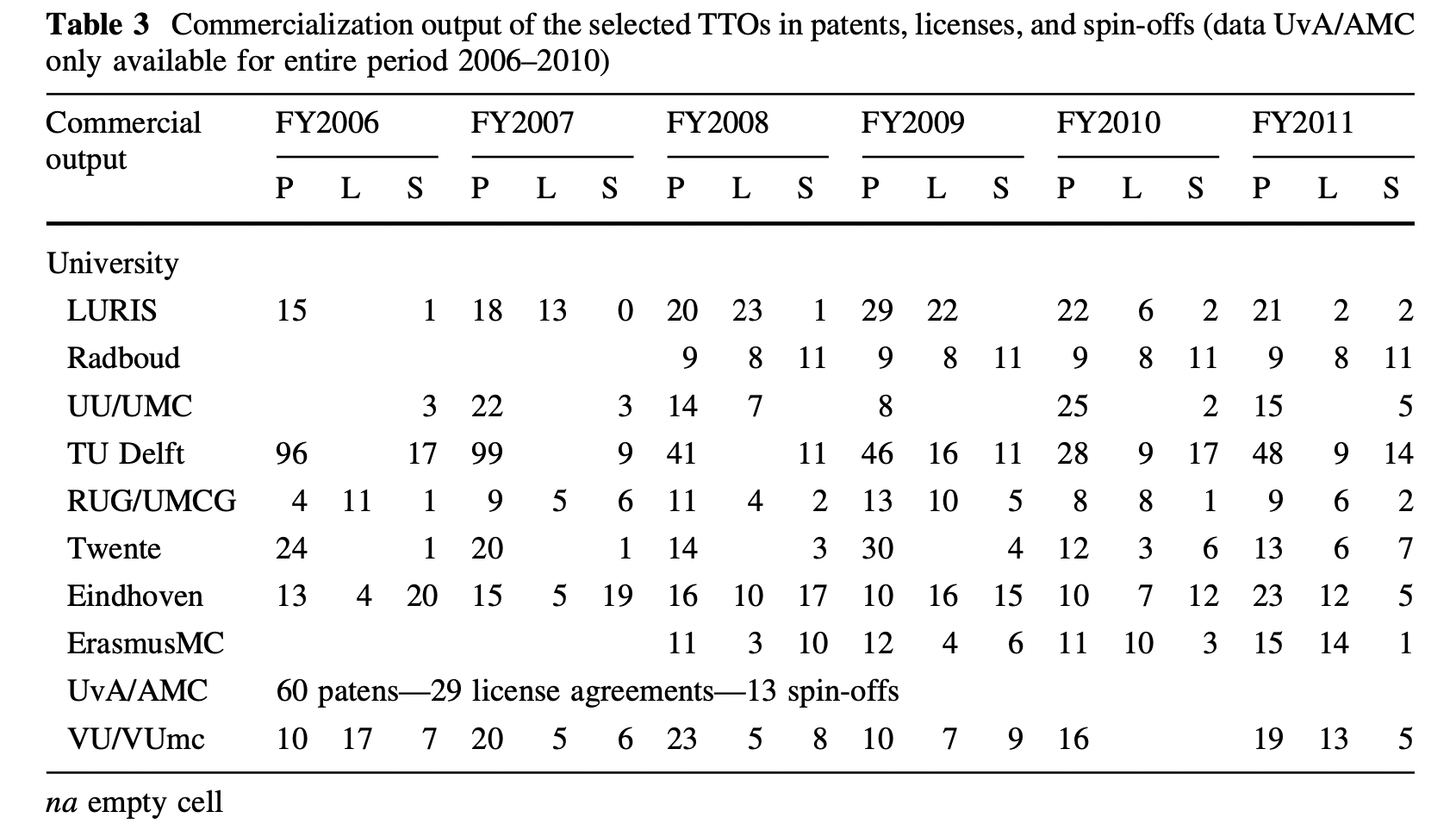Patents and spin-offs do not have the same added value
One possible way to quantify the effectiveness of Technology Transfer is to measure the success of technology transfer from universities by using the total number of patents, licenses and spin-offs. However, this procedure can't be simply add together the number of patents and spin-offs, for example, since they are very different value to the economy. Because patents can be awarded to ideas without empiric verification, the value added to the economy can even be negative (patents have a cost to generate and maintain).

Patents don’t generate any value in themselves. In the table of [@vinig2015Measuring the performance of university technology transfer using meta data approach: the case of Dutch universities] (above), for example, there are universities with more patents than licenses, or the opposite. Licenses can't be separated from the patents, since they are the only prove that there is any form of value in the intellectual property generated (patented or not). Also, since Patents can be used to block third parties, they may end up being a wasteful metric more than a success indicator.
(follow up: Science after WWII has stagnated or correlating GDP to scientific productivity is a reasonable proxy for progress).
Tags: #economic-growth-indicators #patents #spin-offs #scientific-management #technology-transfer
Backlinks
These are the other notes that link to this one.
